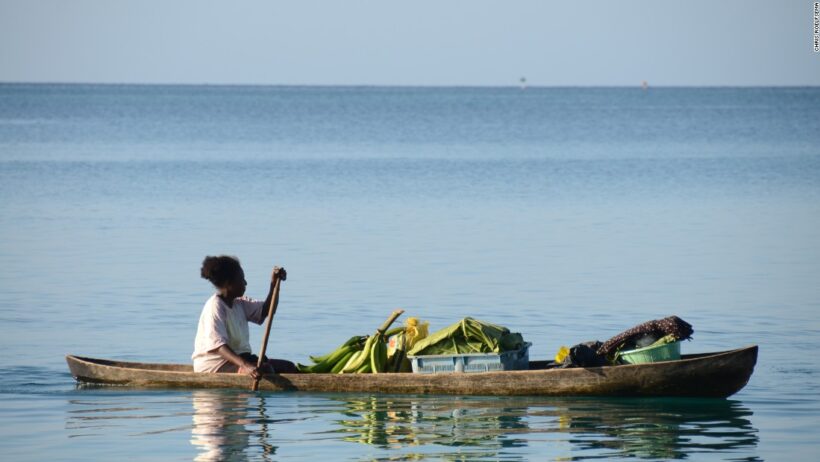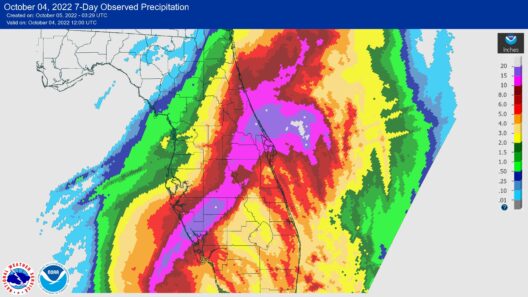Indonesia, an archipelagic nation extending over 17,000 islands, stands on the precipice of an ecological crisis exacerbated by rising sea levels. The inexorable march of climate change is engendering an alarming reality for this Southeast Asian nation. As environmental scientists meticulously document, sea levels are ascending at an unprecedented rate, jeopardizing not only the islands themselves but the rich tapestry of life and culture that they harbor. This discourse explores the multifaceted repercussions of rising seas on Indonesia’s islands while providing an informative landscape of the challenges and potential solutions.
The phenomena of sea-level rise can be attributed to a confluence of global warming, with melting polar ice caps and expanding seawater acting as principal culprits. In Indonesia, this issue is acutely felt, particularly in coastal regions such as Jakarta, where subsistence and urban life intertwine precariously. Here, the elevation of land is an essential component in the broader discussion on climate resilience. Coastal erosion, salinization of freshwater resources, and increased flooding are now everyday realities for millions of Indonesians.
Coastal erosion serves as a harbinger of the encroaching seas, steadily devouring shorelines and displacing communities. Villages that have existed for generations are succumbing to the relentless force of waves and storms, propelled by the ferocity of nature and mankind’s own infrastructural decisions. Indonesia has observed the unsettling loss of entire beaches, while many fishing communities find their traditional methods of livelihood increasingly threatened. The cultural heritage that has thrived for decades is now at risk, leading to a unique form of cultural erosion paralleling the physical one.
In addition to erosion, the salinization of freshwater aquifers presents another formidable challenge. Many Indonesian islands rely on groundwater sources for drinking and agricultural use. However, as seawater intrudes these aquifers, communities face the dire possibility of water scarcity. The repercussions of this phenomenon deepen the locus of struggle for sustenance among the rural populace. Farmers are finding their crops unable to thrive in the increasingly saline soils, leading to diminished yields and threatening food security across the archipelago.
As urban spaces, particularly Jakarta, grapple with acute flooding exacerbated by sea-level rise, the implications extend beyond environmental degradation. The capital city is slowly sinking due to both subsidence from excessive groundwater extraction and the weight of burgeoning urbanization. Projections indicate that large parts of Jakarta could be underwater by 2050 if no significant interventions are undertaken. The displacement of millions could lead to unprecedented humanitarian crises, creating an influx of “climate refugees” seeking asylum in surrounding areas, thus straining resources further.
In response to this imminent hazard, the Indonesian government has begun to craft an array of strategies intended to bolster resilience against the rising tides. Coastal defenses have gained prominence in this objective, including the construction of sea walls, mangrove restoration projects, and the promotion of sustainable land-use practices. Preservation and reestablishment of mangrove ecosystems have emerged as a pivotal thrust in Indonesia’s climate adaptability narrative. These natural barriers not only attenuate the impact of waves and storm surges but also provide habitat for myriad marine species.
Local communities stand at the forefront of the fight against climatic upheaval. Indigenous knowledge and practices, often inextricably linked to the ecological intricacies of their surroundings, must be woven into modern resilience strategies. Engaging local populations in coastal management initiatives has never been more crucial. By fostering partnerships between communities and governmental entities, more inclusive and effective adaptation measures can be developed, ensuring that the voices of those most affected are heard in the decision-making processes.
Fostering global cooperation is another integral aspect of addressing the implications of climate change. The international community must extend support to developing nations like Indonesia, transferring technology and sharing best practices in climate adaptation. Such collaboration could manifest in various forms—from financial aid that facilitates large-scale infrastructural projects to knowledge exchange that bolsters localism in sustainability practices. Furthermore, global platforms for climate advocacy, such as the Paris Agreement, work to hold world governments accountable to their commitments, urging nations to reduce greenhouse gas emissions on a scale commensurate with the looming threats.
Moreover, education is a vital tool in fortifying community resilience against the effects of climate change. Increased awareness of environmental challenges, sustainability practices, and climate science among Indonesians equips citizens to respond effectively to crises. Schools, non-profit organizations, and local governments must collaborate to facilitate educational programs that propagate understanding of climate change impacts and resilience strategies.
In conclusion, Indonesia’s disappearing islands represent a microcosm of a larger global dilemma faced by many coastal nations. The reality of rising sea levels is an undeniable truth, one that implicates not only the future of this vast archipelago and its peoples but also underscores the urgent need for concerted efforts to mitigate climate change. By embracing a truth-driven approach that integrates local wisdom, bolsters community involvement, engages in international cooperation, and prioritizes education, there exists a pathway through which Indonesia can navigate the turbulent waters ahead, safeguarding both its environment and its cultural legacy for generations to come.








